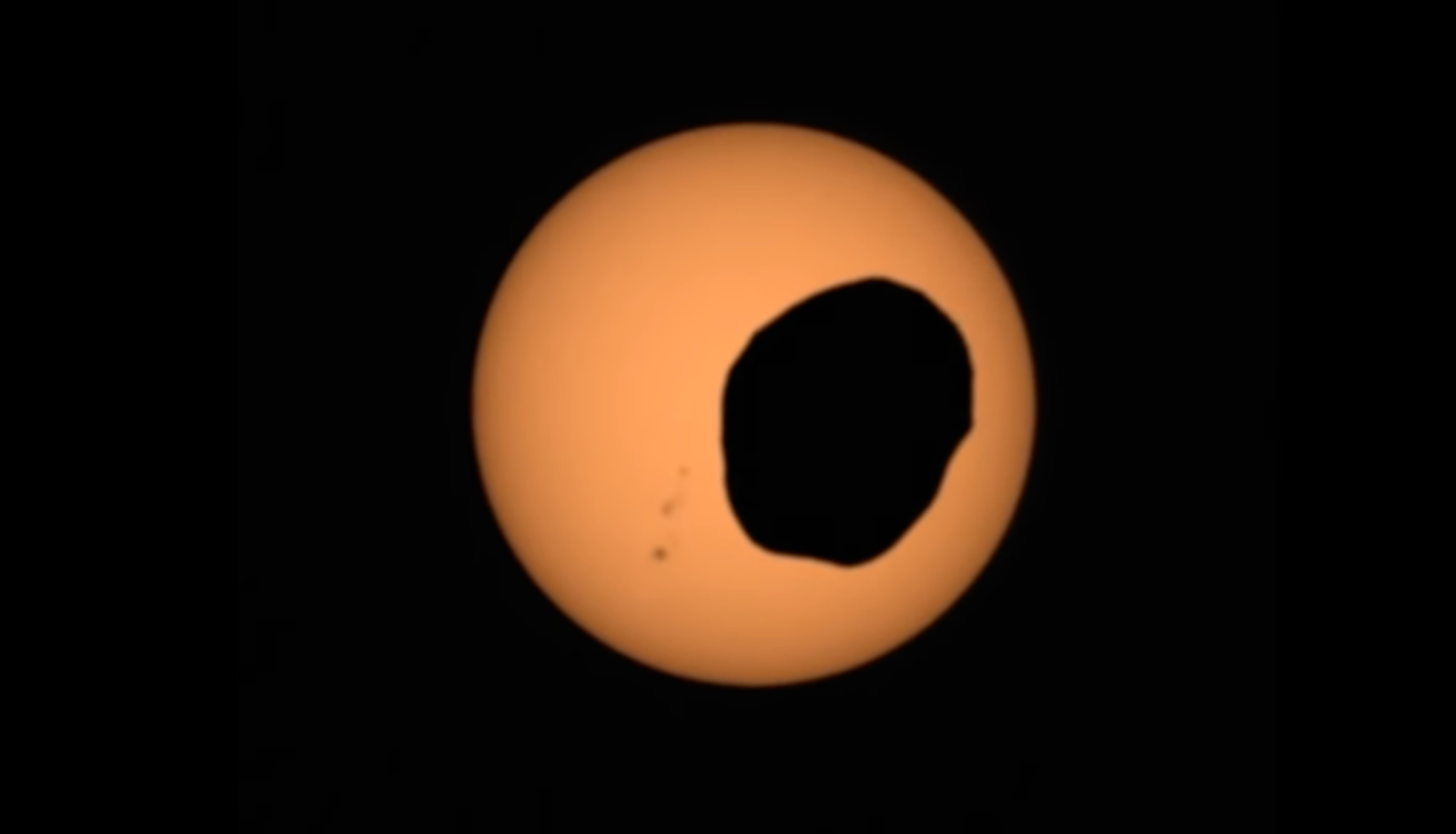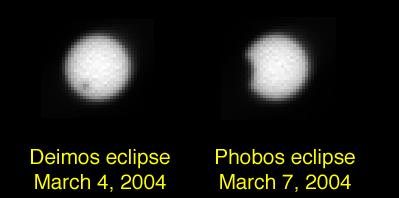
You might have forgotten about Mars‘ two little moons. Smaller and not so circular, they aren’t as crazy as those found around Jupiter or Saturn. However, they are still special because we can see them pass in front of the Sun like our own, and through Perseverance, we can see Mars’ solar eclipses with better resolution than ever before.
NASA released its video of Mars’ small moon named Phobos passing in front of the Sun, called a solar eclipse. These spectacular events can be seen every few years here on Earth and take place on any planet with a moon. However, we’ve only observed them on two, here and Mars.
Captured using Perseverance’s Mastcam-Z, the zoomed-in view of Phobos in front of the Sun shows the most detail of the Sun and Phobos from Mars for scientists to study yet. As the lumpy moon passes in the front of the Sun, you can not just see a clear outline of Phobos but also sunspots.
This is Perseverance’s first solar eclipse since landing on Mars over a year ago. Currently, the car-sized rover is making a trek to a river delta, only stopping to photograph its parachute and now this solar eclipse. Video of Mars’ solar eclipse has come a long way from when it was first observed on the ground by the twin rovers Spirit and Opportunity.

The video is so much cleaner than before and similar to what we capture of our own solar eclipses. Sadly, we’ll never see a total solar eclipse on Mars, as Phobos and Deimos (the two moons of Mars) are not large enough to completely block out the Sun.
Perseverance is only one year into its planned two-year-long mission. After that, however, we expect Perseverance to get a hefty mission extension just like its relatives Curiosity, Spirit, and Opportunity all have had. So here’s to more solar eclipses from our newest Martian explorer.
FTC: We use income earning auto affiliate links. More.


Comments